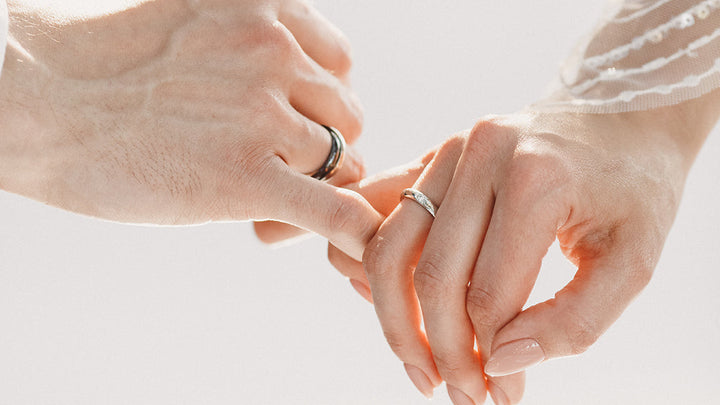Unlocking the Secrets: Why Your Wedding Ring's Hand Choice Reveals More Than You Think!
Wedding rings are more than just pieces of jewelry; they are profound symbols of love, commitment, and partnership. Across the globe, the significance of wearing a wedding ring varies, particularly regarding which hand it is placed on. In many Western cultures, the tradition dictates that the wedding ring is worn on the left hand, often believed to symbolize a direct connection to the heart. However, in other cultures, the right hand is favored, reflecting different beliefs and practices. This article aims to delve into the cultural, traditional, and personal significance of wearing a wedding ring on either the left or right hand, exploring how these choices can reveal deeper insights into our values and identities.

Cultural Perspectives on Wedding Ring Placement
The placement of wedding rings is steeped in cultural significance and historical context. In many Western traditions, particularly in the United States and much of Europe, the left hand is considered the standard for wearing wedding rings. This custom is thought to have originated from the ancient belief that the left hand has a vein, often called the "vena amoris," that runs directly to the heart, making it the ideal location for a symbol of love and commitment. Conversely, in several cultures, particularly in parts of Eastern Europe and South America, the right hand holds greater significance. In these regions, couples may wear their wedding rings on the right hand as a symbol of equality and partnership. For instance, in countries like Germany and Poland, the right hand is often chosen for engagement and wedding rings, representing a shared journey. This cultural variance highlights that the choice of hand is not merely a personal preference, but a reflection of deep-rooted traditions and beliefs surrounding marriage.
Symbolism of the Left Hand vs. Right Hand
Diving deeper into the symbolism associated with each hand, we find that the left hand is often linked to love, intuition, and the emotional side of relationships. In many cultures, it represents receiving and yielding, qualities that resonate with the nurturing aspects of marriage. On the other hand, the right hand is frequently associated with action, strength, and assertiveness, symbolizing the active commitment one makes in a relationship. In various spiritual traditions, the right hand is seen as a tool for giving and creating, which can signify the proactive approach couples may take in building their lives together. The contrast between these symbolic interpretations illustrates how the choice of hand can reflect not only personal beliefs but also the dynamics within the relationship. For instance, a friend of mine wears her wedding ring on her right hand; she feels it symbolizes her active role in her marriage, emphasizing partnership and shared responsibilities.
Personal Choices and Modern Trends
In today’s world, individual preferences play a significant role in the decision of which hand to wear a wedding ring on. As society becomes more inclusive and diverse, factors like gender identity and personal beliefs are increasingly influencing these choices. For some, wearing a wedding ring on the left hand still aligns with traditional views, while others may opt for the right hand as a statement of their unique identity and values. Additionally, modern trends show a rise in non-binary and same-sex couples who may choose to break away from conventional norms altogether. A close friend shared how they and their partner decided to wear their wedding rings on their right hands as a representation of their non-traditional relationship. This decision was not only a personal choice but also a way to challenge and redefine societal expectations surrounding marriage. The evolving nature of relationships means that the meaning behind wearing a wedding ring is becoming more personalized and reflective of individual journeys.
The Significance of Hand Choice in Weddings
As we explore the cultural, symbolic, and personal dimensions of wearing a wedding ring on either the left or right hand, it becomes evident that this choice is more than a simple fashion statement. It is intertwined with our backgrounds, beliefs, and the ways we choose to express our commitments to our partners. The traditions surrounding wedding rings serve as a lens through which we can understand not only our own values but also the rich tapestry of human relationships across cultures. Ultimately, whether worn on the left or right hand, a wedding ring remains a powerful emblem of love and devotion, reflecting the unique story each couple shares.
Exploring Choices: The Impact of Wedding Ring Placement
Understanding the implications behind wearing a wedding ring on either hand opens up a broader conversation about love, commitment, and cultural identity. Each choice reveals a layer of meaning that can deepen connections and foster understanding in relationships. As you reflect on your own choices regarding wedding ring placement, consider the traditions and personal beliefs that shape your decisions. Engaging in discussions about these choices can lead to more profound connections and enrich your understanding of the diverse expressions of love and commitment in today's world.








